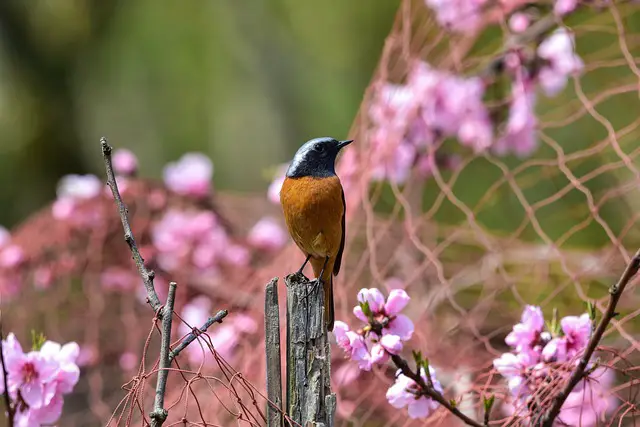
We may receive commissions from purchases made through links in this post, at no additional cost to you.
I love watching the wildlife in my backyard. My hickory trees are a bit of a hub for the neighborhood squirrels, and the birds love to nest in our oak trees and shrubs. But when peach harvest season comes around, I want to do everything I (humanely) can to keep their paws and beaks off of my peaches.
The goal is to utilize eco-friendly and nonlethal methods to deter animals from eating the fruit I’m growing. There’s a lot you can do to discourage wildlife from snacking without resorting to relocation, traps, baits, poisons, or firearms. Check your local laws – in some places, certain species of squirrel, for example, may be protected. Trapping and releasing in a different location may also be prohibited.
Remember that animals are clever. You’ll have better results if you combine repelling methods (for example, draping netting as well as hanging shiny objects in the tree). Remove any deterrents after harvest so the animals don’t get used to them.
Depending on where you live, you may be dealing with birds, squirrels, rats, opossums, raccoons, chipmunks, deer, or others. I’ve found many easy, effective, inexpensive methods to keep peaches safe (or at least, safer) from these critters. Try several of them, or rotate which ones you use to better protect peach trees from birds and animals.
1. Pick a good location.
If you haven’t planted your peach tree yet, choose a location that is a good distance away from fences, wires, sheds, or other structures. Do your best to cut off access to those animal highways. Also avoid planting near good bird nesting locations, such as tall hedges or wooded areas.
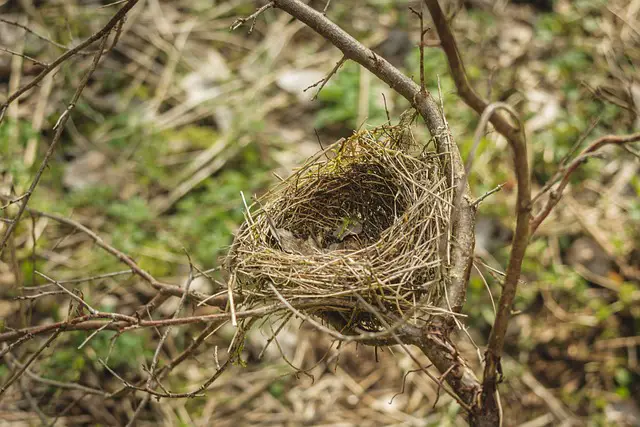
Prune the limbs of an already established tree so they aren’t growing too close to any climbable surfaces. As a bonus, pruning will keep the tree more compact (which may make it easier to protect) and may even increase fruit production. Check out my article A Simple Guide to Pruning Peach Trees for Maximum Harvest to find out how to do it.
2. Clean up around the tree.
Fallen fruit on the ground is a squirrel magnet. Clean up fruit debris as soon as possible so the critters don’t get used to munching close to the tree. While you’re at it, rake up any other debris (like acorns, nuts, etc.) that might attract hungry animals.
Keep the area near the peach tree mowed and cleared of tall weeds, since animals love to hide in tall grass or brush. Anything you can do to make the environment less appealing to animals is a good idea.
3. Feed and water the birds (elsewhere).
One of the best things you can do is make sure the birds eat their fill somewhere else in the garden. Place bird feeders away from peach trees – and other fruit trees – and hopefully they will be less tempted to snack on the peaches.
Birds and animals get thirsty in the heat, just like humans. Provide water for the wildlife in your backyard, and they may stay away from the fruit. You can use a bird bath, fountain, or even just a shallow pan or bowl.
4. Get a dog.
There are many good reasons to have a dog, in my opinion, but owning a dog may also help deter animals in the back yard. The scent that a dog leaves around the property could keep squirrels and other rodents from running rampant. I noticed this with my own dog, Friday, who shed plenty of fur in our backyard. But my tomatoes and fruit stayed un-munched by the squirrels, while my neighbor’s garden suffered.
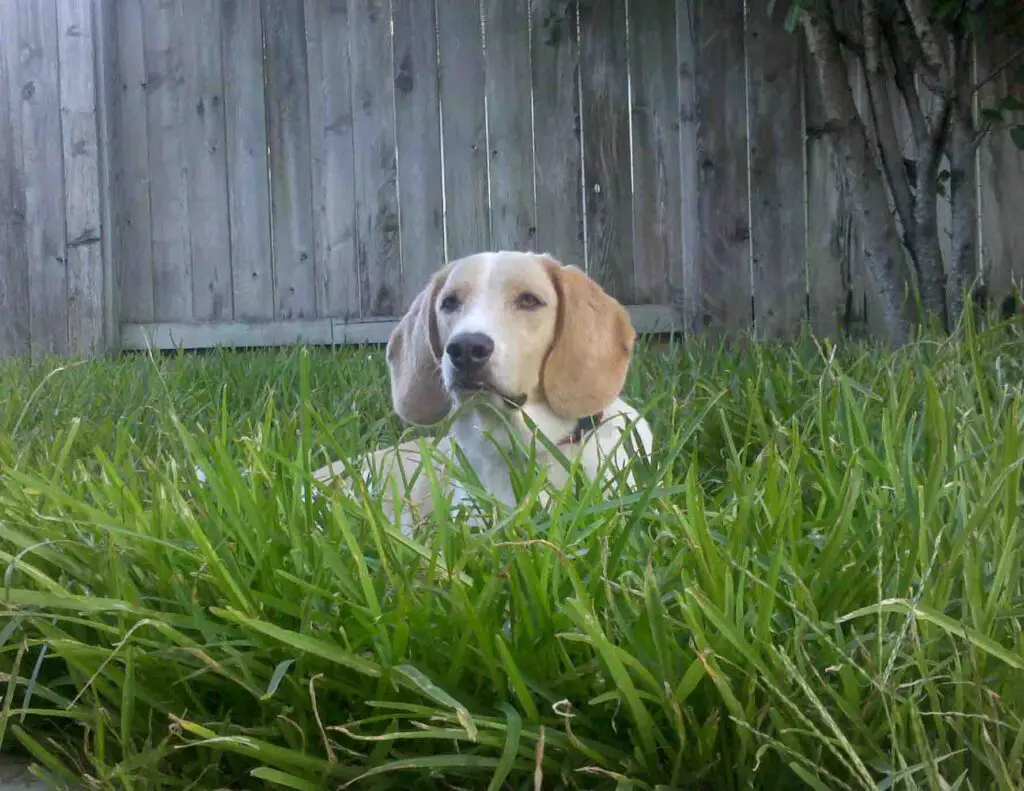
I’ve seen it suggested to hang bags of dog fur (or even human hair!) from the fruit tree to keep critters away. I don’t know about you, but I’d much rather have a dog running around my backyard than have to collect animal fur to put in my peach tree.
5. Hang reflective objects in the tree.
Shiny, reflective surfaces that move in the breeze might be enough to startle birds and squirrels away from a peach tree. Bird scare tape is inexpensive – just cut it into strips and hang it all over the tree. You can do the same with aluminum foil, although it is not as reflective and may not work as well. Other objects to try: old CDs or DVDs, small mirrors, shiny streamers, mylar balloons, pinwheels, foil pie tins, etc.
It will probably be more effective to combine this with other methods, and to keep the birds guessing by frequently moving objects to different locations. Once they learn there is actually nothing to fear, they’ll be back to snack on the peaches.
6. Place noisemaking objects in the tree.
Hang aluminum pie pans close together in the tree so they make noise in the breeze (bonus because they’re shiny). Windchimes are a good option since they make a more pleasant sound, but hopefully they’ll be noisy enough to ward off birds and animals. Even a battery-powered radio blasting music could deter peach thieves.
Just like with hanging reflective objects, change the method frequently so they don’t get used to items. The goal here is to startle animals away with sudden noise. Keeping the element of surprise will be more effective, so change methods frequently.
7. Use an ultrasonic animal repellent device.
This is a more high-tech version of startling noise than hanging pie plates. These devices are motion sensitive, and they emit ultrasonic sounds (that can’t be heard by humans) and flashing lights to keep birds and animals away from the area.
I like this one because it’s designed to look like an owl, it’s solar-powered (as most are), and it comes in a two-pack.
8. Place moving objects near the tree.
This works similarly to shiny objects. Examples of moving objects could include spinning pinwheels or metal sculptures, a bobble-headed owl statue, or even the blowup “air dancers” that you often see at car dealerships (especially good if you have a larger backyard orchard).
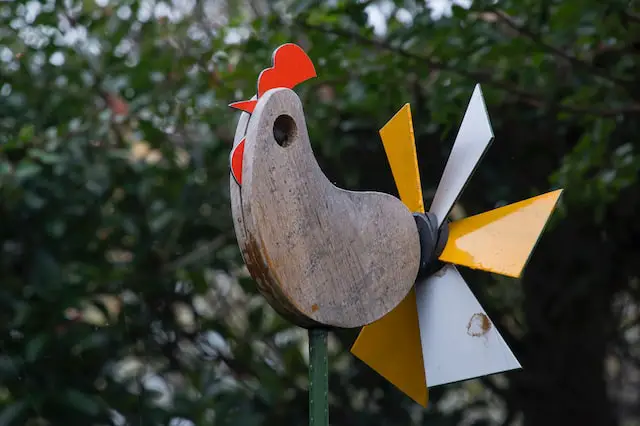
You can even make your own moveable scarecrow. Use permanent marker or paint to draw large eyes on a balloon, then hang it up near the peach tree to scare off birds and rodents.
9. Place statues of predators around the tree.
A faux owl or fox placed nearby may be enough to keep animals away from peach trees. It’s even more likely to work if the statue moves, such as this fun owl with a rotating head (it’s solar-powered, so no need to worry about batteries).
It’s important to move these decoys around so the birds or animals don’t get used to them. Changing the location of the “scarecrow” frequently may be enough to continue scaring away critters…just make sure to keep it near the fruit trees.
10. Attract natural predators with owl boxes.
Attracting beneficial wildlife can help keep the balance in your backyard ecosystem. Install an owl house to give natural rodent predators a home. You can make your own, or you can purchase one at a variety of price points. I like this one for its sturdiness, simplicity, and quality (at a moderate price).
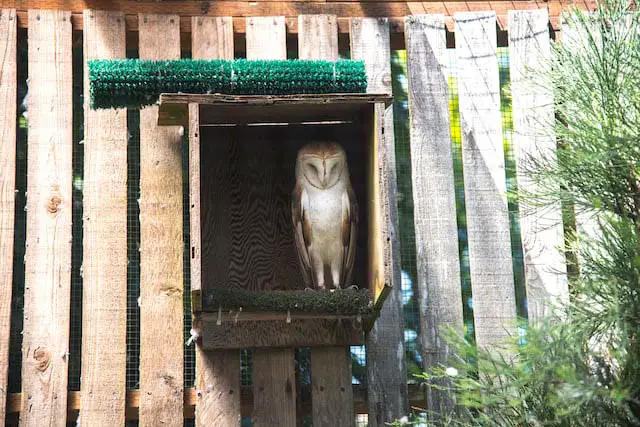
11. Drape reusable bird netting over the tree.
Drape netting with small holes (less than a half inch) over the entire canopy of the tree to discourage birds from pecking the peaches. This can be tricky if your tree is large, but you can also hang netting over specific branches or limbs.
Cover the tree about three weeks before the fruit is ready, just when it starts to soften and deepen in color. Use bricks or heavy boards to weigh the netting down so no four-legged creatures can sneak under it. Some nets come with a drawstring that you can tie around the base of the tree.
If your trees aren’t too big, you can also attach the netting to a simple frame that extends over the fruit trees. If you like to DIY, build one yourself out of lightweight PVC pipe or wood.
12. Use a squirrel baffle.
Although most squirrel baffles are made to protect bird feeders, you can also use them to try and keep squirrels from climbing your fruit trees. They come in a cone shape or more of a cylinder and are designed to make it difficult for squirrels to climb.
You can make your own baffle by wrapping sheet metal around the trunk of the tree, snug enough that the animal can’t slip underneath it, but loose enough to leave the tree room to grow. This works best when combined with other deterring measures…squirrels are crafty and clever, especially when there’s food involved.
13. Paint the trunk of the tree.
If you notice the bark on the tree trunk has been nibbled on by rodents or even deer, protect the trunk with a tree wrap, guard, or special paint. As a bonus, these can also insulate the tree and protect against sunburn in the summer. You can use watered-down latex paint, but I prefer to use an organic option that is formulated to be safe for trees and wildlife.
14. Spray a rodent deterrent.
There are commercially available sprays that are formulated to be repellant to squirrels, rats, opossums, and other rodents. They usually contain some smelly ingredients such as synthetic predator scents (like fox urine), rotten egg/sulfur scents, or capsaicin.
You can easily make your own capsaicin spray (capsaicin is the stuff that makes hot peppers spicy). Combine cayenne pepper powder (the hotter the better), water, and a bit of dish soap in a spray bottle. Let it sit overnight, then spray it once or twice a day on the tree until the squirrels learn to stay away. Once you notice them leaving the tree alone you may only need to spray once every several days or after rainfall.
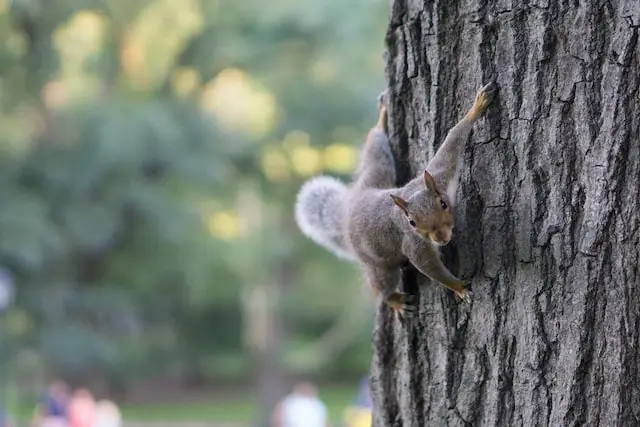
Again, squirrels and raccoons are smart and will eventually figure out that the smells won’t hurt them. Try rotating between products to keep them from getting used to the scents.
15. Protect fruit with mesh bags.
Try putting mesh fruit bags like these over individual ripening peaches or clusters of fruit. This is a simple way to keep your peaches from being eaten before you have a chance to pick them. The bags are reusable, inexpensive, and easy to use. Hang the bags in the last few weeks before harvest, just as the peaches are starting to soften.
16. Let them eat fruit.
Finally, remember that your backyard is their home, too. It’s no bad thing to sacrifice some of your peach harvest to birds and rodents. After all, animals are a part of a healthy ecosystem. You want some birds around to eat harmful insects, for example. Don’t make 100% success your goal…do what you can to deter excessive fruit damage, but go ahead and share some peaches with the wildlife.

